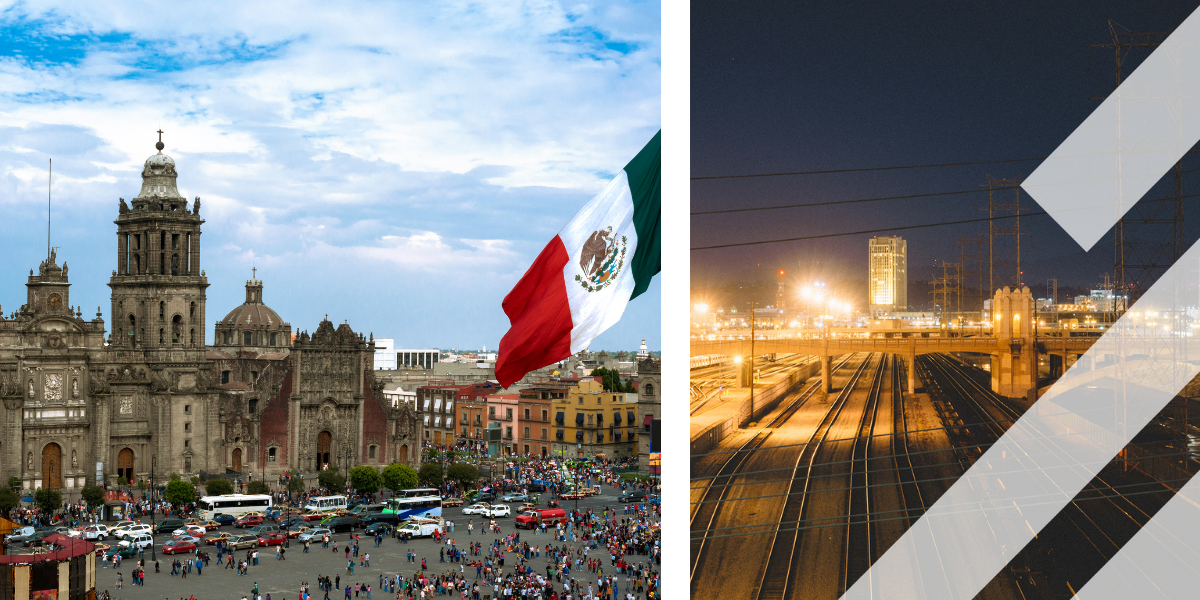Leading Europe into the future
The Netherlands’ national road operator, Rijkswaterstaat, has created an innovative and dynamic ITS timeline, which is helping transportation professionals across the continent deploy and prepare for the bewildering array of new traffic technology that is now being produced and planned
Words | James Gordon
The ancient Greek philosopher, Plato, may have coined the famous phrase, ‘Necessity is the mother of invention’, but perhaps it is the Netherlands, with its low-lying geography and densely packed towns and cities, that has inspired the groundbreaking ideas and extraordinary feats of innovation that have done most to advance his concept in the modern day.
But if Dutch engineers have found a way to tame the powerful North Sea storm surges that threaten its flat geography, Rijkswaterstaat (RWS), the national road network operator in the Netherlands, is battling to prevent an equally potent man-made tempest, largely comprised of technological uncertainty and lack of visibility, from making landfall. These disruptive winds that batter and bombard the Netherlands and the rest of the world are being driven by the unrelenting pace of innovation and the ceaseless march of automation. The eventual result? Positive change in the form of a smart mobility revolution, dominated by intelligent self-driving cars, roadside infrastructure and linked together by real-time data. However, what is far from clear is when this integrated transportation system, with smart infrastructure and intelligent vehicles at its very heart, will emerge.
It is a conundrum that Louis Hendriks has been grappling with for three years, and one that inspired him to create the first Leading Innovation Timeline (LIT) in 2015. Since then, RWS has created a new version of this remarkable visual tool every year, each aiming to chart the major breakthrough technologies like intelligent transport systems (ITS) that are likely to have the most seismic impact on traffic management between now and 2035.
Explains Hendriks, who is RWS’s international traffic advisor and also chairs its ITS team, “The concept of embedding an integrated transport system on Dutch roads is very different to the real-world implementation. Just because a technology is commercially available, for example, it doesn’t mean that it will bring about immediate and radical transformation. Change doesn’t happen overnight. And this paradigm shift won’t occur all at once. It will be a slow and iterative process. But, most importantly, no one really knows what exactly will alter, when it will occur, and how exactly it will affect the world of traffic management. How, therefore, are traffic managers and road operators expected to anticipate these changes and plan for the future? The LIT is an attempt to tackle that unpredictability head-on and to provide a clear, concise and powerful real-world road map for the future.”
The 2017 timeline, which contains key data and expert input both domestically and from road operators who participate in European ITS Platform (www.its-platform.eu), focuses on 10 of the most significant Information Communication Technologies (ICT), citing not just the date they will become available commercially, but also listing the tipping point when their effect will be truly felt right across the field of traffic management.
The myriad challenges featured in this insightful and organic blueprint include the different levels for automated driving systems, V2I landscapes, V2V technology, and big data. It tries to predict the burden each is likely to place on the shoulders of Europe’s national road operators.
But how exactly did Hendriks and his team formulate the ‘impact and disrupt’ dates for each intelligent transport system?
Says Hendriks, “We sought the opinion of over 100 experienced practitioners both in Holland and abroad, gathering arcane data and forecasts from experts belonging to the Dutch National Traffic Centre, the European ITS Platform, and also consulted members of the ITS corridor projects such as Arc Atlantique and Next-ITS.
“Having reached a consensus that 25% of road users would need to adopt a technology before it can affect real change, we were able to highlight the year that a new technology delivered a penetrative impact on traffic management, traffic flow, safety, and the environment. Not only this, the timeline also enables us to forecast future progress, and most importantly, map out the significant S-Curves, in that it provides road operators with an unprecedented insight and visibility on the events and the technologies that not only advance, but can also stymie the progress of innovation on the timeline.”
Future focused
While providing heightened clarity and an enhanced range of vision for traffic managers and road operators, a better understanding of the future is the project’s main objective. Hendriks also thinks that the Innovation Timeline could play a crucial role as a collaborative and unifying force for change within the industry.
Hendriks says, “We work closely with the public, private and knowledge sectors – all of whom provide unique and esoteric skills. In the future, academia and trail-blazing innovation hubs, such as the Dutch Smart Mobility Embassy, can advance the timeline by conducting and facilitating real-world research trials and participating in pilot projects that deliver game-changing quantum leaps.
“Secondly, in the Netherlands, the Ministry of Infrastructure and the Environment is a key stakeholder in this project. The Ministry is eager to promote the use of next-generation technology in cooperation with EU member states, the European Commission and vehicle OEMs.
But why is forging an alliance between international governments so fundamental to the success of the timeline?
Hendriks replies, “Because many of the technologies being developed now and in the future go far beyond the limits and scope of a national road operator. Take the self-driving vehicle revolution, for example. It will require a new legal framework to be enshrined in law, and a set of standards and regulations to match.
“But most of all, it will change the way we think about cars. The traditional car ownership template may be replaced by a leasing model. As a road operator, while we can offer the weight of our knowledge and experience, we rely on law makers to take the lead on important policy issues regarding the future of transportation.”
However, in the interim period before fully autonomous SAE Level 5 vehicles hold sway – currently predicted for around 2040 – how can this prescient document be used to help road operators negotiate the complex traffic environments where both SAE 1 and 2 level cars, and human driven vehicles are part of the landscape?
“With Dutch drivers owning eight million vehicles and with 400,000 new cars sold each year, each with an estimated lifespan of 10.2 years, it will take two decades before the effects of partial automation technologies begin to show,” says Hendriks. “Therefore, mixed fleets is a reality that road operators globally will have to plan for throughout the next 20 to 30 years.
“While there is a real risk, that if not managed properly, mixed traffic could negatively impact both congestion and road safety, conversely, mixed fleets can also affect positive change, in that vehicles are able to communicate in real time with motorists driving non-equipped cars, which may help prevent accidents.”
Waiting for the fiber future
They fill so many newspaper column inches that you could be forgiven for thinking that self-driving cars already dominate our roads. They don’t, and full vehicle automation safe enough to be deployed on public roads is still many years away. Louis Hendriks, who has worked for the Dutch road authority RWS for over two decades, explains the building blocks that have to be laid down first before the dream of autonomous vehicles becomes a reality. So what will the basic infrastructure look like?
“The cars of tomorrow will communicate with each other and the roadside infrastructure in real time using wi-fi and 5G wireless networks,” says Hendriks. “But this golden age of ‘floating data’ is dependent on hundreds of thousands of meters of glass fiber cable embedded with sensor technology being laid along major transport arteries. Without it, the connected driving revolution cannot happen.
“Currently, all five of the Netherlands traffic management centers are linked with fiber-optic cable, but installing it along side roads and motorways, where it will have the greatest effect, requires precise and intricate engineering as each of the sensors have to be amalgamated into the cable, which is both time-consuming and costly.”
Intelligent cameras
They may not be any different to look at from normal roadside infrastructure, but Holland’s traffic enforcement cameras are about to get a significant technology upgrade.
With the technology of tomorrow set to harness the power of the Internet of Things, artificial intelligence and machine learning, many of the cameras in the Netherlands, which are largely used for incident management purposes and to police peak-hour lanes, are now set to become ‘intelligent cameras’.
In the Netherlands, thanks to the LIT, which has been further reinforced by RWS’s multi-stakeholder approach, the software requirements for these next-generation cameras have already been factored into the overarching plan.
“Important research and development work has already begun on how best to incorporate cutting-edge software needed to create a network of smart cameras,” says RWS’s Louis Hendriks.
“And thanks to the LIT’s enterprising philosophy, we believe that by 2021, smart cameras will be capable of filtering through vast reams of data much more quickly than a human is able to, and will alert traffic management centers to incidents in real time – not after they have happened, but as they are unfolding. Not only will these intelligent cameras save lives and cut congestion, but in the long run they may also deliver sizeable cost savings to local and central government.”
Source: James Gordon, for Intertraffic World Magazine 2018
Share your story
Do you have an innovation, research results or an other interesting topic you would like to share with the professionals in the infrastructure, traffic management, safety, smart mobility and parking industry? The Intertraffic website and social media channels are a great platform to showcase your stories!
Please contact our Sr Brand Marketing Manager Carola Jansen-Young.
Are you an Intertraffic exhibitor?
Make sure you add your latest press releases to your Company Profile in the Exhibitor Portal for free exposure.
Get up to speed on the mobility industry - our newsletter straight to your inbox!







